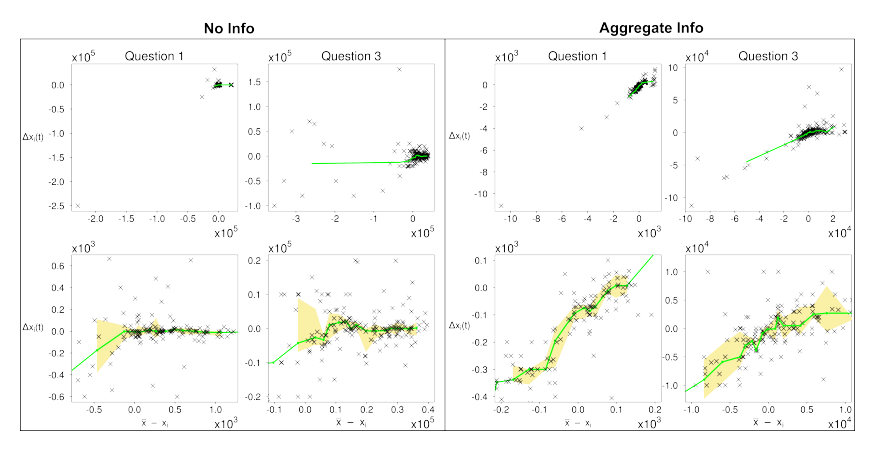Decisions and the Influence of Others
“To what extent are the opinions we hold about subjective matters the result of our own considerations or a reflection of the opinions of others?”

So begin Pavlin Mavrodiev and colleagues in describing an experiment to quantify how deeply people’s opinions are influenced by others. The answer gives pause for thought.
These guys, who are at the Swiss Federal Institute of Technology in Zurich, studied the data from an experiment in which people were asked six questions with a specific answer that they were unlikely to know. For example, “what is the border length between Switzerland and Italy?”
They were then shown the average answer given by everybody else in the test and asked to resubmit their answer.
Mavrodiev and co then looked to see if there were any patterns in the way people modified their reply.
It turns out that in these circumstances, the way people modify their answer follows a simple and linear mathematical rule.
That’s a surprise for two reasons. The first is that the questions were designed to produce responses ranging over 10 orders of magnitude. The simple rule held over this entire range.
Second, people seem to follow this rule regardless of their own emotional states and convictions, for example, in their own ideas or in the competencies of others. “Despite individual differences… the same mathematical relationship underlies the individual reactions to social influence,” say Mavrodiev and company.
That could have an important impact on the way social scientists model the behaviour of humans and the accuracy of their predictions about collective decisions.
Interesting stuff!
Ref: arxiv.org/abs/1302.2472: Quantifying the Effects of Social Influence
Keep Reading
Most Popular
Large language models can do jaw-dropping things. But nobody knows exactly why.
And that's a problem. Figuring it out is one of the biggest scientific puzzles of our time and a crucial step towards controlling more powerful future models.
How scientists traced a mysterious covid case back to six toilets
When wastewater surveillance turns into a hunt for a single infected individual, the ethics get tricky.
The problem with plug-in hybrids? Their drivers.
Plug-in hybrids are often sold as a transition to EVs, but new data from Europe shows we’re still underestimating the emissions they produce.
Google DeepMind’s new generative model makes Super Mario–like games from scratch
Genie learns how to control games by watching hours and hours of video. It could help train next-gen robots too.
Stay connected
Get the latest updates from
MIT Technology Review
Discover special offers, top stories, upcoming events, and more.